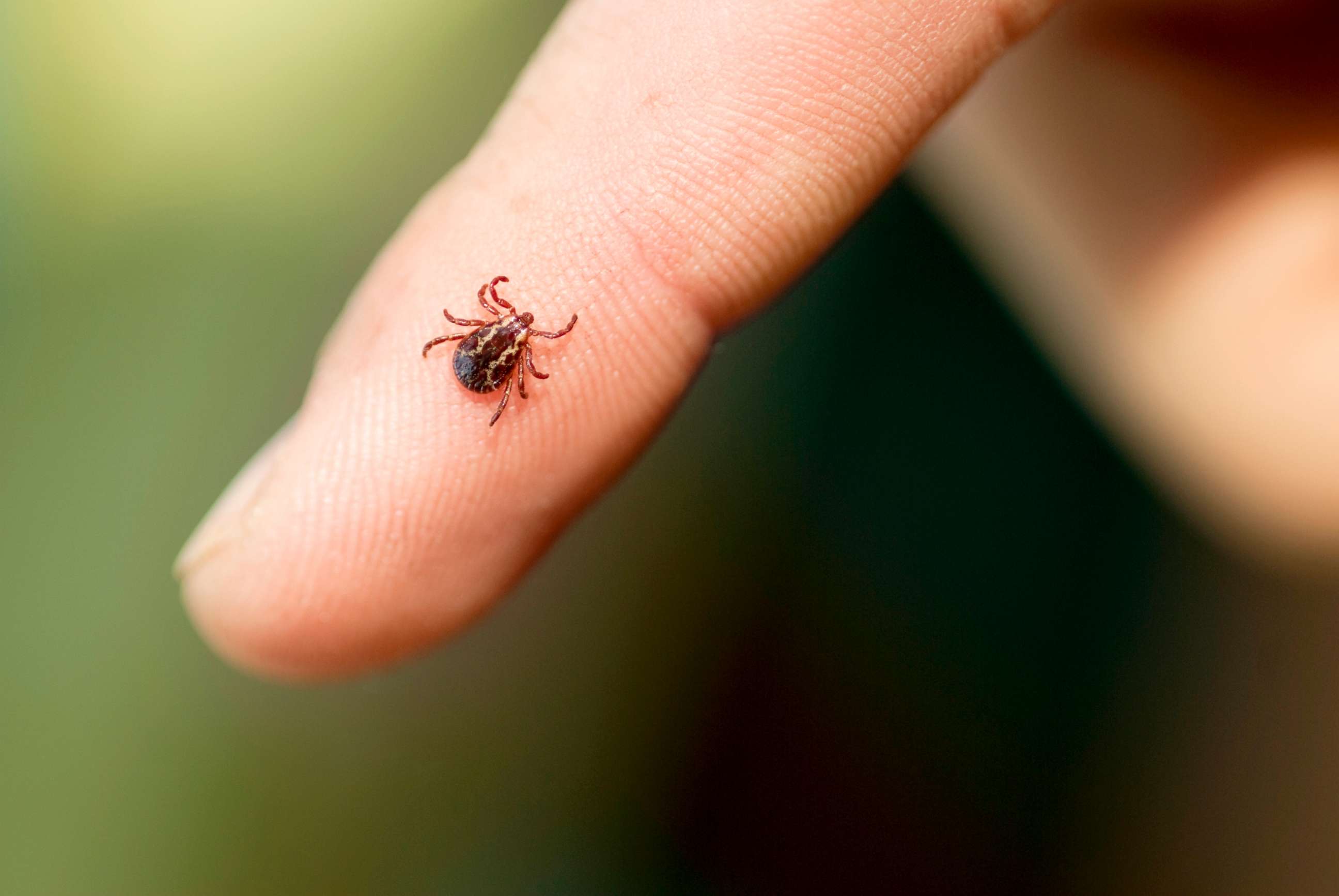Tick-borne illness babesiosis is spreading in the US, CDC report shows
The number of new cases of babesiosis greatly increased between 2011 and 2019.
The number of new cases of babesiosis, a tick-borne illness, increased significantly between 2011 and 2019 in the United States, a new CDC report found. It’s also spreading consistently in three new states — now, the disease is endemic in 10 states in the Northeast and Midwest.
The increase isn’t surprising, said Dr. Peter Chin-Hong, an infectious disease specialist at the University of California, San Francisco, in an email to ABC News. It’s consistent with what experts are seeing with other tick-borne diseases, like Lyme disease.
There are likely multiple factors behind the increases, including human behavior and warmer weather. More people are moving to areas with ticks and are interacting with animals (like deer and mice) that the ticks feed on, Chin-Hong said. Climate change may also be playing a role, he says. “A warmer climate may increase tick survival, shorten the life cycle of ticks (so many more cycles possible in a season) and increase the duration of tick season.”
Usually, the parasite infects humans after being bitten by certain ticks. These ticks are commonly found in wooded, bushy or grassy areas. They are most likely to bite during the spring, summer and fall, though adult ticks may still bite during the winter if temperatures are above freezing. While there is no vaccine available, the disease can be prevented by limiting tick exposure.

Once infected, symptoms can vary. Symptoms can range from none at all to fevers, headaches, kidney failure, and even death. In 2019, there were a total of eight deaths reported. According to the CDC, patients with symptoms can be treated with a combination of antibiotics and antiparasitic drugs.
Before this new report, the CDC only considered seven U.S. states to have consistent number of babesiosis. This included Connecticut, Massachusetts, Minnesota, New Jersey, New York, Rhode Island, and Wisconsin. However, the newly released data shows that Maine, New Hampshire and Vermont have similar or higher number of new cases.
Between 2011 and 2019, 16,456 cases of babesiosis were reported in 37 states, according to the report. Most cases overall were reported in New York (4,738). The highest incidence was reported in Rhode Island (18 cases per 100,000 people in 2015). Vermont, Maine and New Hampshire had the largest increase in the number of new cases. Rates of new cases increased in Connecticut, Maine, Massachusetts, New Hampshire, New Jersey, New York, Rhode Island and Vermont.
In addition to changes in human behavior and climate, there has also been increased awareness of babesiosis in the past decade, said Dr. Amesh Adalja, an infectious disease expert at Johns Hopkins Center for Health and Security, in an email to ABC News. That may also contribute to the increased number of cases. “More clinicians are ordering tests,” he said. With testing, doctors started to find cases in new areas.
Preventing babesiosis and other tick-borne illnesses
People should be aware of their risk of contracting babesiosis when traveling or living in areas where the illness is more common. The best way to prevent tick-borne illnesses is avoiding ticks. People can minimize tick exposure by covering exposed skin, using repellants and walking on cleared paths in wooded areas, the CDC says.
Anyone spending time outside in areas where there might be ticks should check their body, clothing, and pets for ticks after coming inside, the CDC says. Showering within 2 hours of being outdoors and putting clothes in the dryer on high heat can also prevent tick bites.
If you do find a tick, pull it straight out with tweezers.
Babesiosis isn’t the only disease ticks can carry — they can also spread Lyme disease, Rocky Mountain spotted fever, and anaplasmosis.
People should seek medical attention if they happen to fall ill after a tick bite, Chin-Hong says.
Lauren M. Cuénant, D.O., is a Physical Medicine and Rehabilitation resident at the University of Miami/Jackson Memorial Hospital and a contributor to the ABC News Medical Unit.




